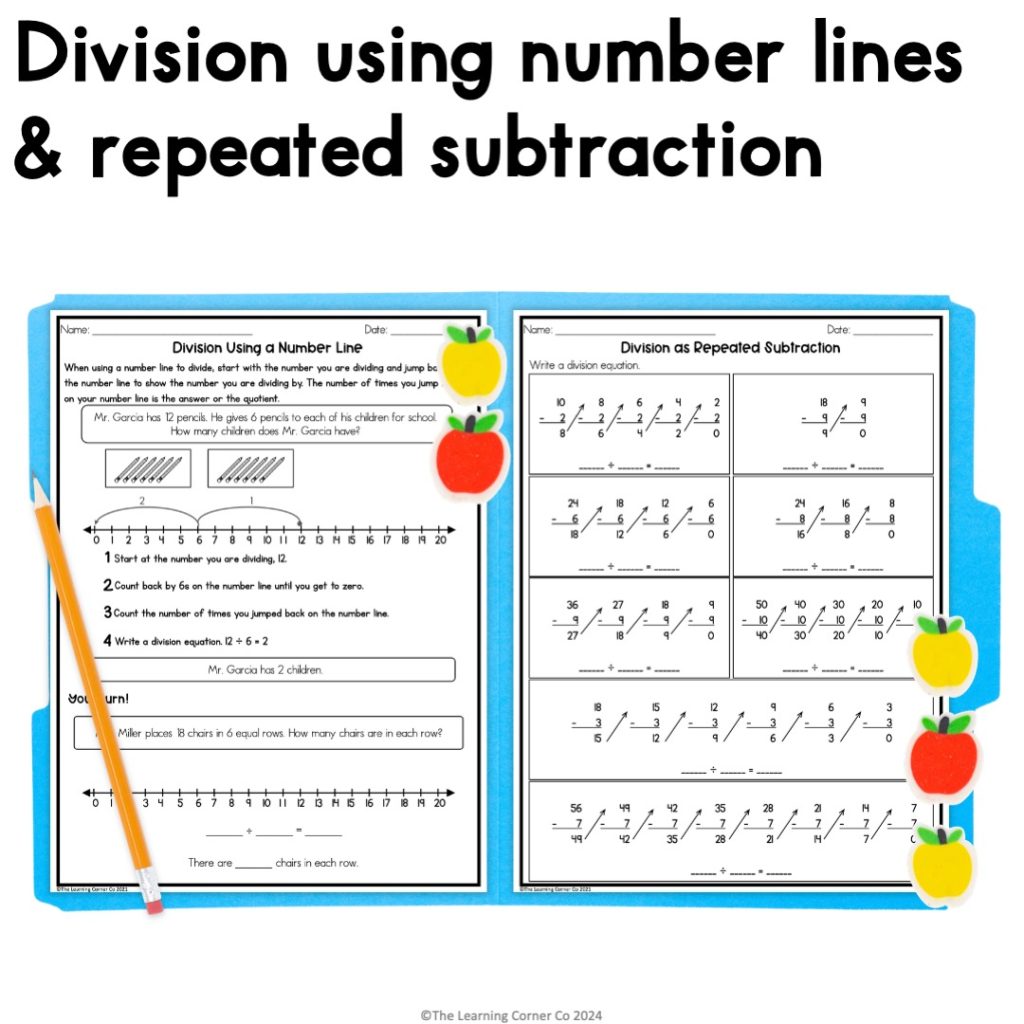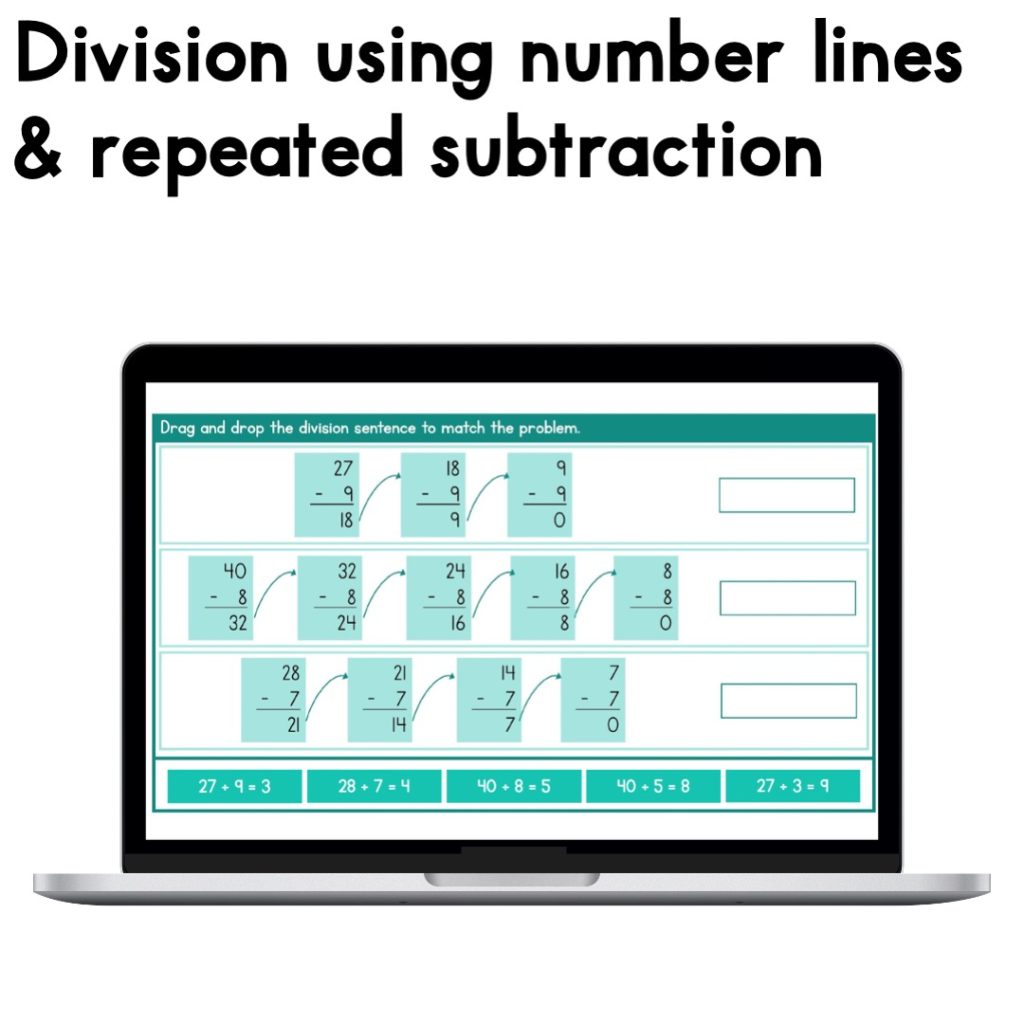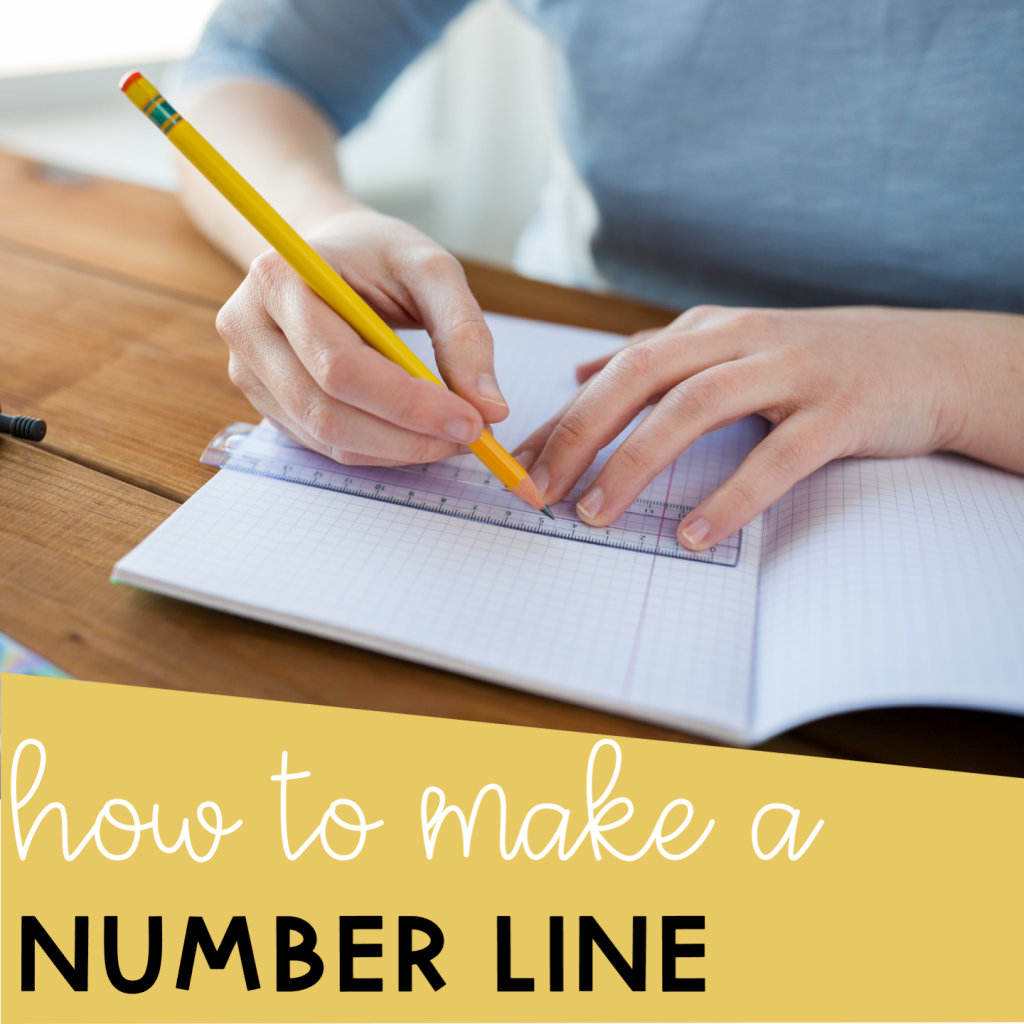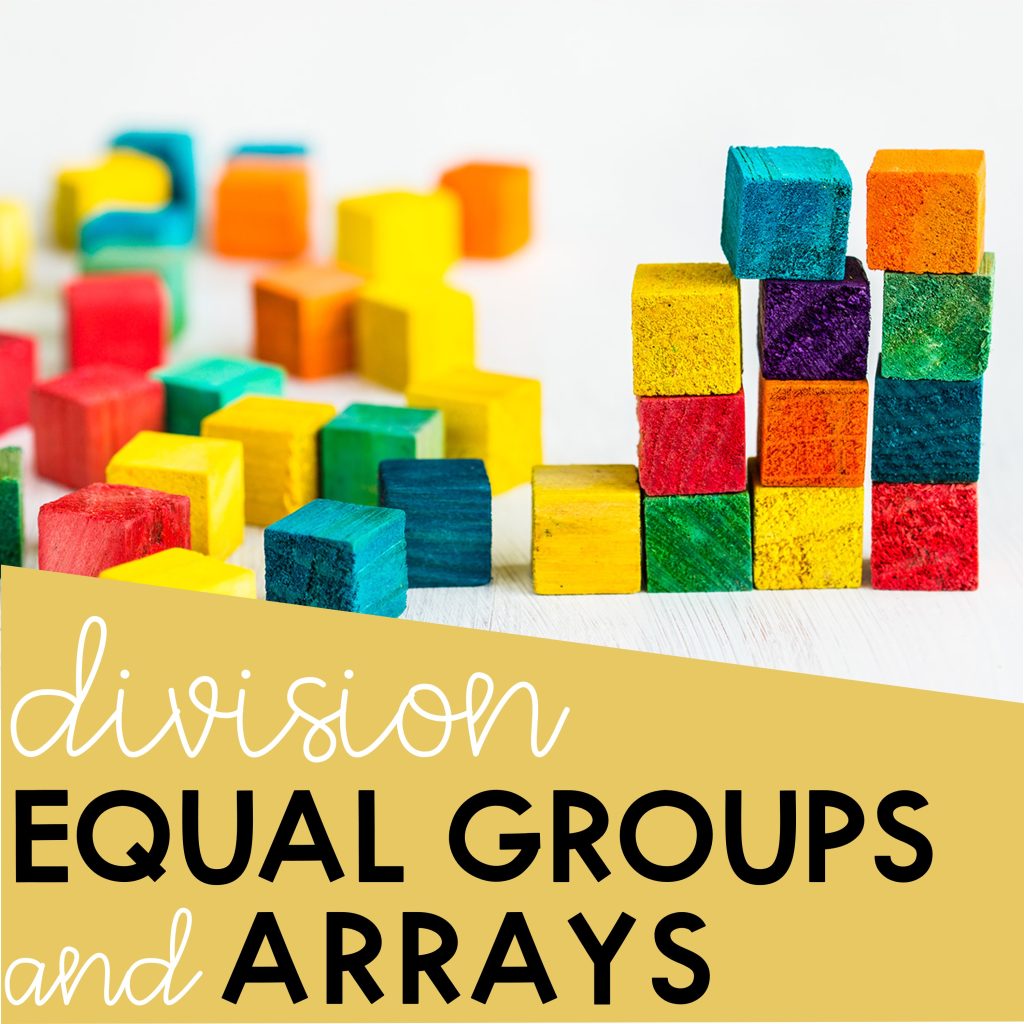Using number lines and repeated subtraction in division will help you visualize and represent the operation.
There are other ways to show division. You can use models such as arrays and number lines. You can also use strategies like making equal groups and using repeated subtraction.
This article will focus on helping you divide using number lines and repeated subtraction.
What is division?
But first, what is division?
Division is separating a total into equal groups. It has a dividend, a divisor, and a quotient.
- A dividend is a number that you are grouping.
- A divisor is a number that tells how many in each group or how many groups there are.
- A quotient is the result of division.
Let’s look at the example 12 ÷ 6 = 2. In this division sentence, you can identify that…
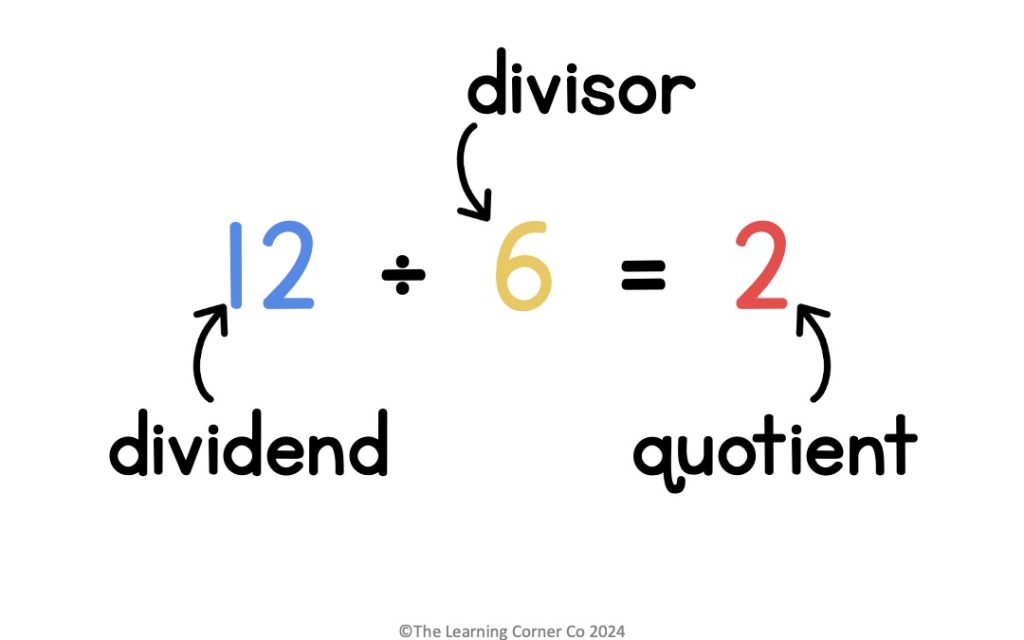
- 12 is your dividend
- 6 is your divisor
- 2 is your quotient
Now that you know the components of a division sentence, let’s start solving them.
How to divide using number lines?
Number lines are visual representations of numbers on a straight line.
To work out a division problem on a number line, let’s use 15 ÷ 3 as an example.
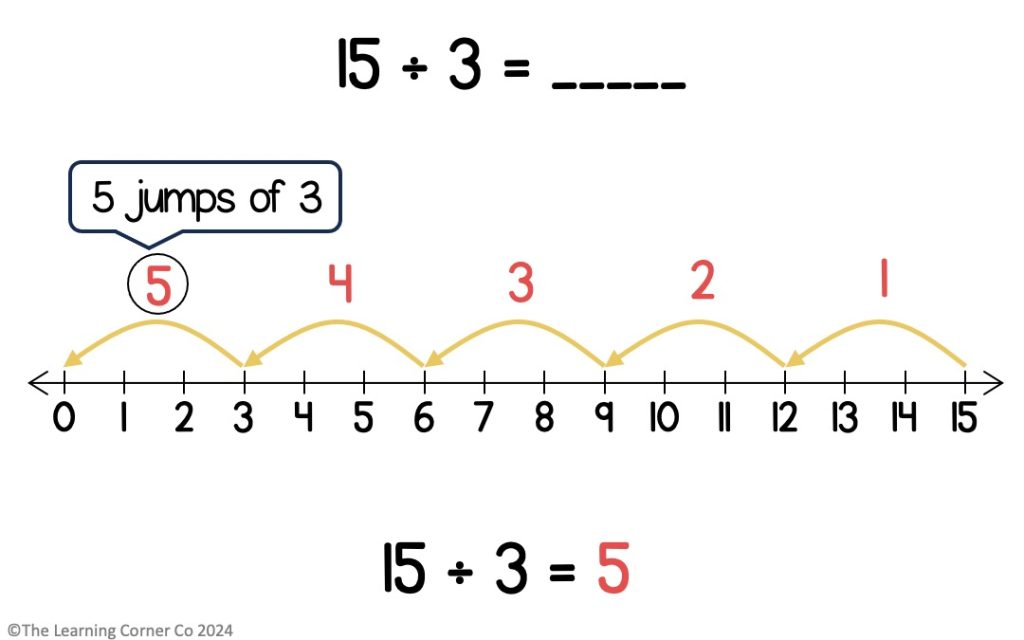
First, make a number line and write down the numbers 0 to 15.
Next, draw a dot (plot) on the number 15 using the number line you made.
Then, since you are dividing by 3, count back by 3s on the number line.
From 15, count back by 3s and draw a jump on the number line.
Continue counting back by 3s and drawing jumps on the number line until you have 0.
Lastly, count the number of jumps of 3 from 15 to 0 to find the quotient.
So, 15 ÷ 3 = 5.
How to divide using repeated subtraction?
Similarly, you can use repeated subtraction to divide. Think of jumping back on the number line as you are counting back which is another way of saying subtracting.
To work out a division problem using repeated subtraction, let’s use 24 ÷ 6 as an example.
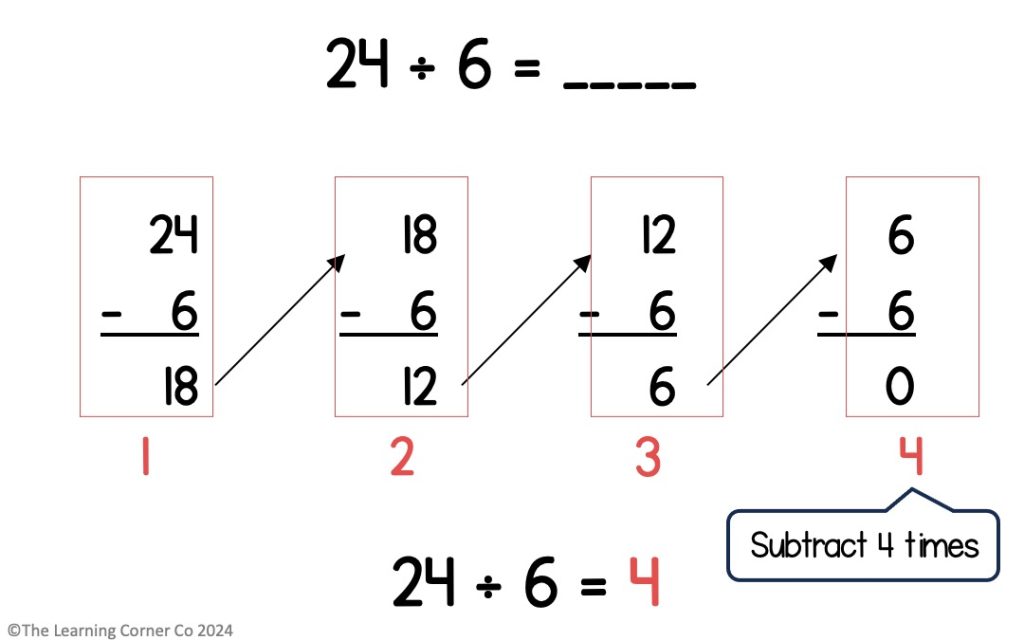
First, start at 24.
Next, subtract 6 from 24.
24 – 6 = 18
Then, repeat subtracting 6 until you get to 0 or until you can no longer subtract 6.
18 – 6 = 12
12 – 6 = 6
6 – 6 = 0
Lastly, count the number of times you subtracted 6.
So, 24 ÷ 6 = 4.
How to divide with remainders using repeated subtraction?
Now, what if you are using repeated subtraction but there is a leftover? These are called remainders. Remainders are what is left after dividing.
To divide with remainders, let’s use 20 ÷ 3 as an example.
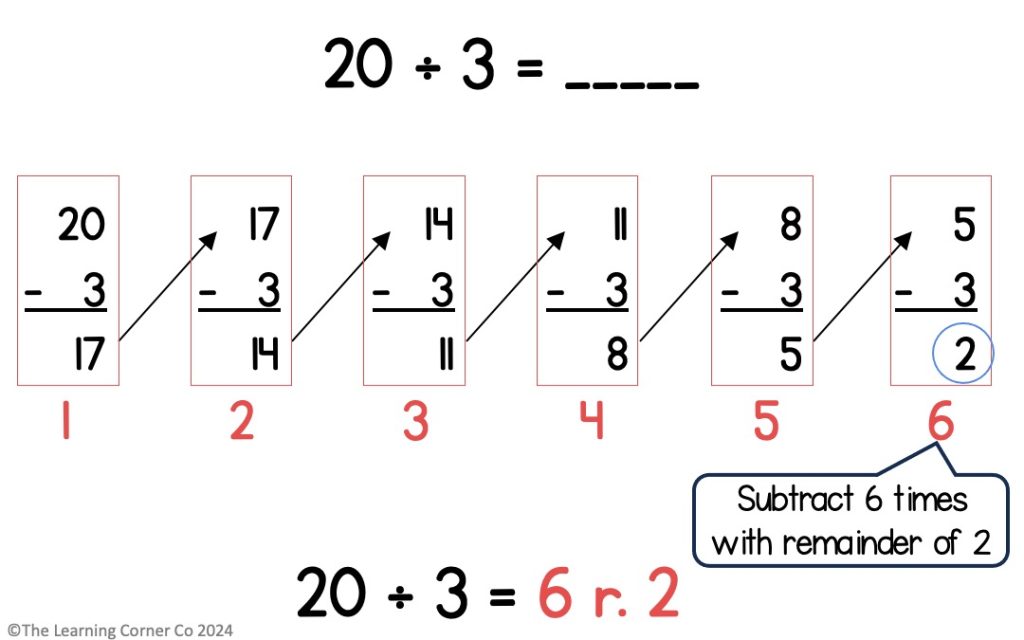
First, start at 20.
Next, subtract 3 from 20.
20 – 3 = 17
Then, repeat subtracting 3 until you get to 0 or until you can no longer subtract 3.
17 – 3 = 14
14 – 3 = 11
11 – 3 = 8
8 – 3 =5
5 – 3 = 2
This time you can no longer subtract 3 from 2. This means that 2 is your remainder.
Lastly, count the number of times you subtracted 3.
So, 20 ÷ 3 = 6 r. 2.
That’s how you use number lines and repeated subtraction when you divide.
Worksheets and Digital Activities
Are you looking for practice to divide using number lines and repeated subtraction? You may find these digital and printable resources helpful.


